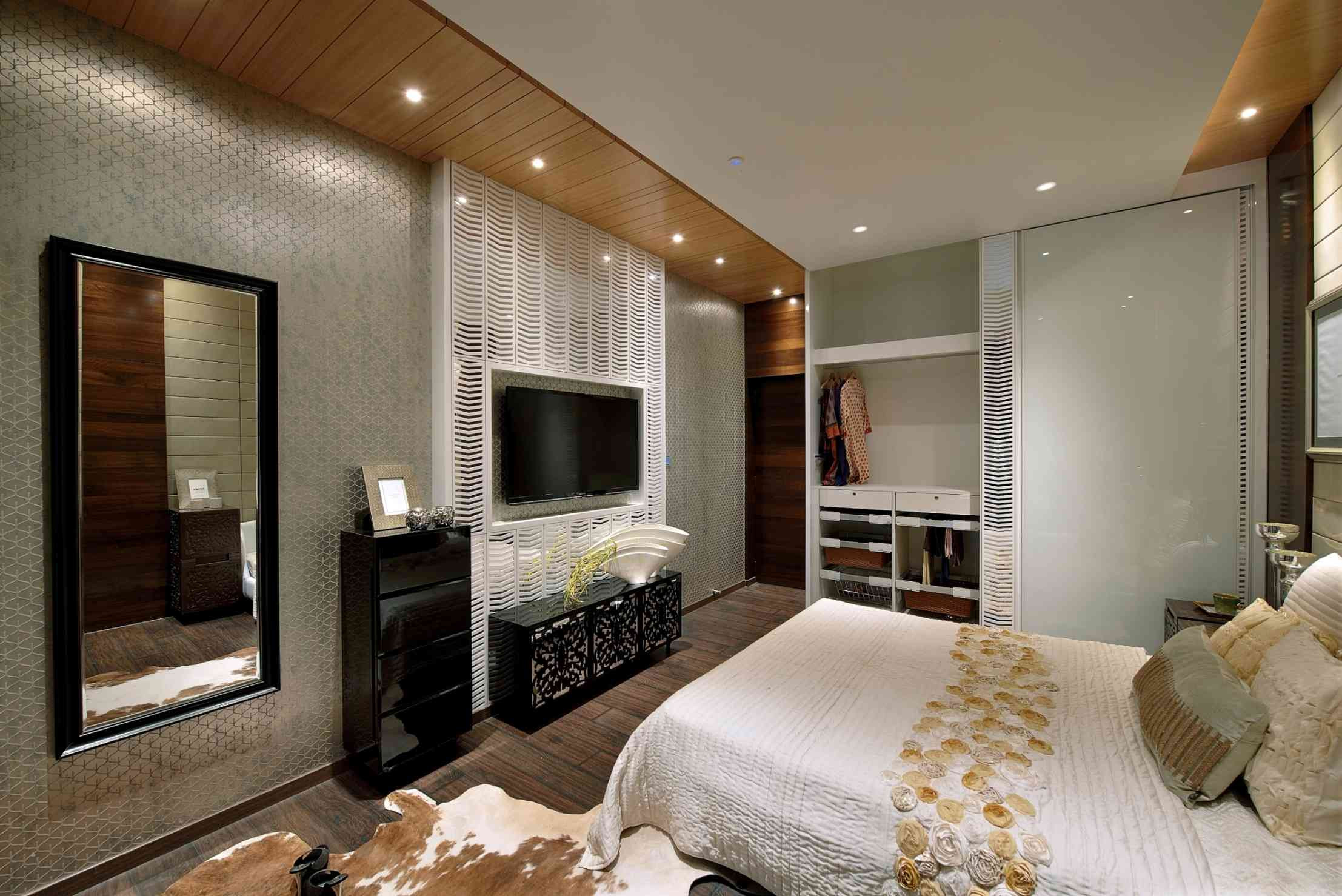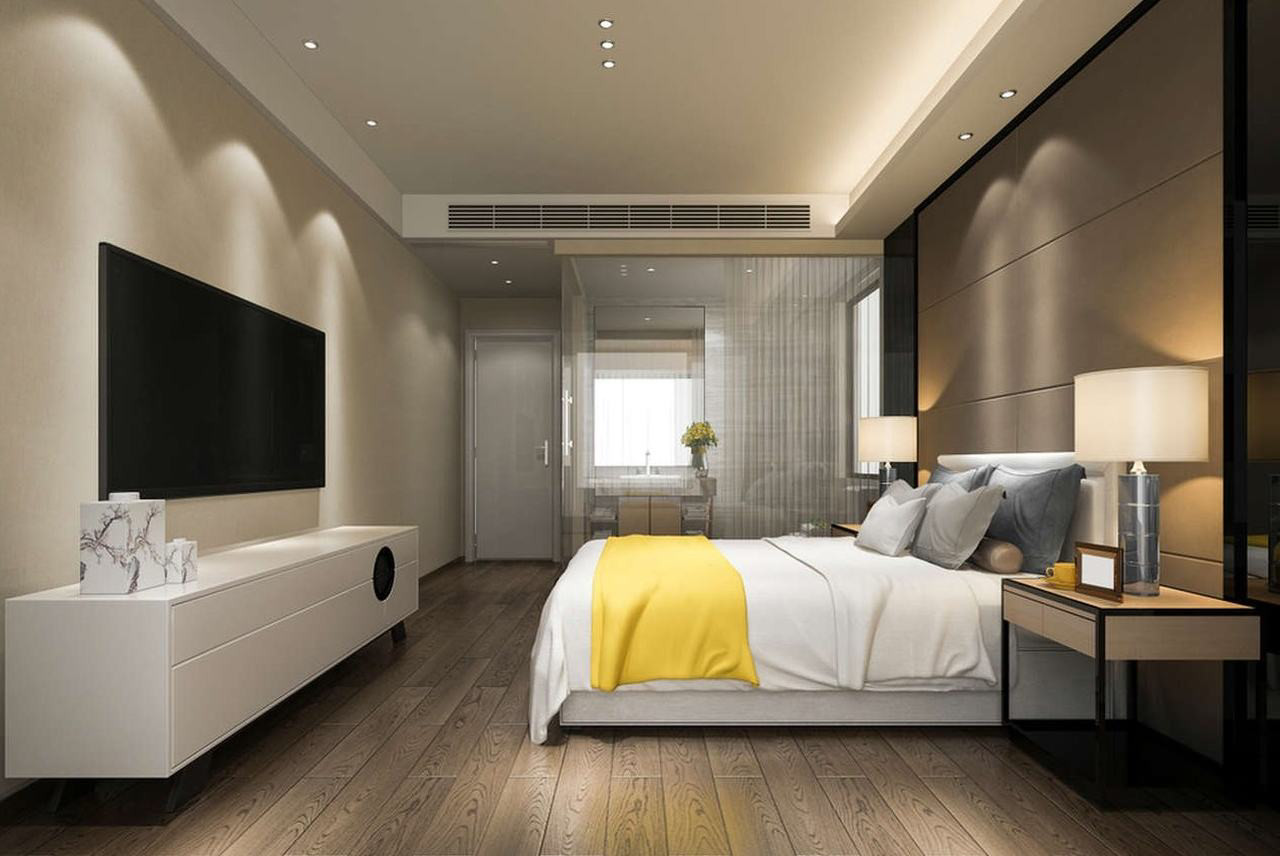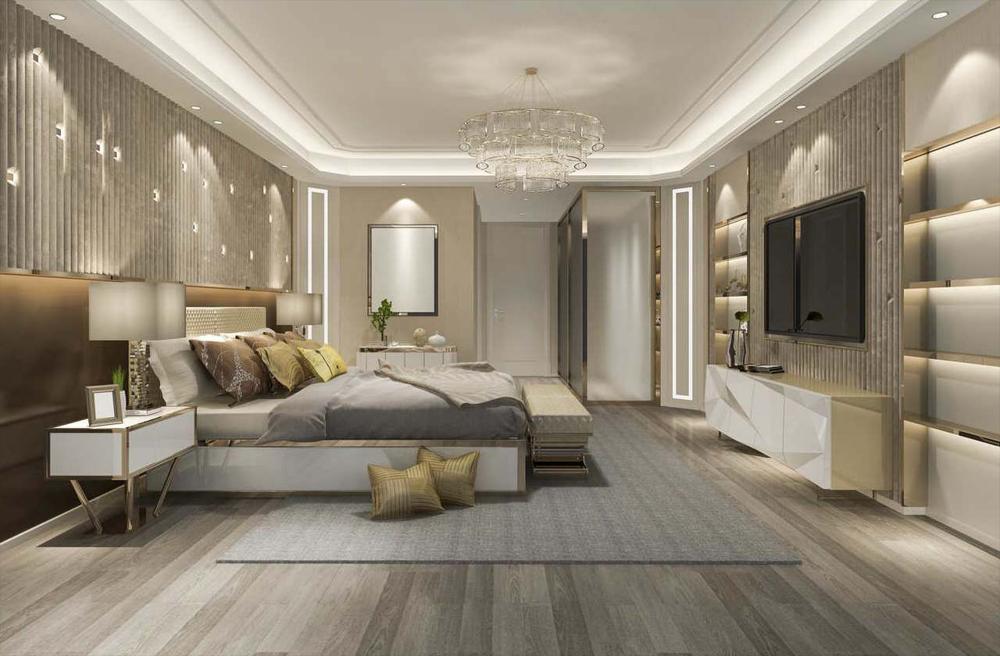Designing the Perfect Kids’ Bedroom with a TV

Creating a kids’ bedroom that is both functional and fun can be a challenge, especially when you want to include a TV. While some might argue against having a TV in a child’s room, there are many benefits to incorporating one into the space, as long as it is done thoughtfully and with consideration for healthy viewing habits.
Choosing the Right TV Size and Placement
The size and placement of the TV are crucial considerations for creating a comfortable and safe viewing experience. A TV that is too large can be overwhelming for a child, while a TV that is too small may be difficult to see. The ideal TV size for a child’s bedroom depends on the room’s dimensions and the distance between the TV and the seating area.
- For a small bedroom, a 32-inch TV is usually sufficient, while a larger room can accommodate a 40-43-inch TV.
- The TV should be placed at a distance of at least 5 feet from the seating area, and ideally, the viewing angle should be around 30 degrees.
- To prevent eye strain, the TV should be placed at eye level or slightly lower when the child is seated.
- Avoid placing the TV directly in front of a window or other bright light sources, as this can make it difficult to see the screen.
Creating a Designated TV Viewing Area
A designated TV viewing area within the bedroom can help to create a dedicated space for relaxation and entertainment. This area should be comfortable and inviting, with a soft rug, comfortable seating, and adequate lighting.
- Consider using a beanbag chair, a comfy armchair, or a small sofa for seating.
- A small side table can be used for holding snacks, drinks, and remote controls.
- Soft lighting, such as a table lamp or string lights, can create a cozy and inviting atmosphere.
- A colorful rug can add a touch of personality and brighten up the space.
Designing a Kids’ Bedroom Layout with a TV
A well-designed kids’ bedroom layout should include a TV, a comfortable seating area, and ample storage. Here are some tips for creating a functional and stylish bedroom layout:
- If possible, place the TV on a wall that is opposite the bed. This creates a natural separation between the sleeping and entertainment areas.
- Create a designated TV viewing area by placing the seating area in front of the TV.
- Use storage solutions, such as bookshelves, cabinets, and drawers, to keep the room organized and clutter-free.
- Incorporate a desk or study area for homework and creative activities.
- Choose furniture that is age-appropriate and durable.
- Use colorful bedding, curtains, and rugs to add personality and vibrancy to the space.
TV Content and Viewing Habits: Kids Bedroom With Tv

Incorporating a TV into a child’s bedroom can provide entertainment and educational opportunities, but it’s crucial to be mindful of the content they consume and establish healthy viewing habits.
Age-Appropriate TV Shows and Movies
Selecting age-appropriate content is essential for children’s development. Different age groups have varying levels of comprehension, attention spans, and emotional maturity.
- Preschoolers (Ages 2-5): Shows with simple storylines, bright colors, and catchy songs are ideal. Examples include “Sesame Street,” “Daniel Tiger’s Neighborhood,” and “Bluey.” These programs often focus on social-emotional learning, language development, and basic concepts.
- Early Elementary (Ages 6-8): Children in this age group can handle more complex narratives and begin to explore different genres. Examples include “Paw Patrol,” “SpongeBob SquarePants,” and “The Magic School Bus.” These shows often introduce themes of friendship, problem-solving, and exploration.
- Late Elementary and Middle School (Ages 9-12): Children in this age group are ready for more mature content, including shows that address social issues and explore diverse perspectives. Examples include “Stranger Things,” “The Owl House,” and “The Good Place.” It’s important to be aware of the content and discuss any sensitive topics with your child.
Setting Screen Time Limits
The American Academy of Pediatrics (AAP) recommends limiting screen time for children, including TV viewing.
- Children under 18 months: Avoid screen time other than video chatting.
- Children 18-24 months: Limit screen time to high-quality programming, and watch together.
- Children 2-5 years: Limit screen time to 1 hour per day of high-quality programming.
- Children 6 years and older: Place consistent limits on screen time and ensure media use does not interfere with sleep, physical activity, and other important activities.
Setting screen time limits helps children develop healthy habits, prioritize other activities, and prevent potential negative impacts on sleep, attention, and social development.
Encouraging Healthy Viewing Habits
Creating a positive viewing environment is crucial for promoting healthy habits.
- Co-viewing: Watch TV shows and movies together with your child. This allows you to discuss the content, answer questions, and guide their understanding.
- Active Viewing: Encourage active viewing by engaging in activities related to the program, such as drawing, singing, or playing games.
- Commercial Breaks: Use commercial breaks as an opportunity to take a break from the screen, engage in other activities, or discuss the content.
- Media Literacy: Teach children about media literacy, helping them understand how media messages are created and how to critically evaluate information.
These strategies promote a more balanced and enriching media experience.
Benefits of Educational and Interactive TV Programs
Educational and interactive TV programs can be valuable tools for learning and development.
- Cognitive Development: These programs can enhance cognitive skills, such as memory, attention, and problem-solving.
- Language Development: Shows with engaging storylines and characters can stimulate language development and vocabulary expansion.
- Social-Emotional Learning: Educational programs often address social-emotional themes, helping children develop empathy, self-regulation, and social skills.
Examples of educational and interactive programs include “BrainPop,” “National Geographic Kids,” and “PBS Kids.” These programs often incorporate interactive elements, such as games, quizzes, and activities, making learning fun and engaging.
Safety and Practical Considerations

Integrating a TV into a child’s bedroom requires careful consideration of safety and practicality to ensure a positive and secure viewing experience. It’s crucial to prioritize safety measures and create a comfortable environment conducive to healthy viewing habits.
TV Placement and Stability, Kids bedroom with tv
Proper placement and stability of the TV are paramount for safety. A sturdy TV stand or wall mount is essential to prevent accidental tipping.
- Choose a Stable Stand: Select a TV stand with a wide base and sturdy construction to ensure stability. Avoid stands with narrow bases or those that are easily wobbled.
- Secure Wall Mounting: If opting for wall mounting, use high-quality mounting brackets designed for the TV’s weight. Ensure the mounting hardware is securely fastened to the wall studs.
- Keep Away from Edges: Position the TV away from the edge of furniture or any areas where it could be easily bumped or knocked over.
- Consider Child’s Height: Place the TV at a height that is comfortable for the child to watch without straining their neck. Ensure it is out of reach of small children who might try to climb on it.
Creating a Safe Viewing Environment
A comfortable and safe viewing environment is crucial for a positive TV experience.
- Adequate Lighting: Ensure sufficient ambient lighting in the room to avoid eye strain. Avoid using overly bright or harsh lighting that can cause discomfort.
- Proper Viewing Distance: Maintain a safe viewing distance, ensuring the TV is not too close to the child’s eyes. The recommended viewing distance is typically three to six times the screen’s diagonal size.
- Ergonomic Seating: Provide comfortable and supportive seating, such as a chair or beanbag, that allows the child to maintain a good posture while watching TV.
- Minimize Distractions: Create a quiet and distraction-free environment to enhance the viewing experience. Minimize noise levels and avoid activities that could distract the child from the screen.
Parental Controls and Content Filtering
Parental controls and content filtering play a vital role in safeguarding children from inappropriate content.
- Set Parental Controls: Utilize the parental control features available on the TV, streaming services, and internet providers to restrict access to age-inappropriate content. This includes setting viewing time limits and blocking specific channels or websites.
- Enable Content Filtering: Activate content filtering on the internet browser and other devices used by the child to prevent access to harmful or unsuitable websites. Many internet service providers offer built-in content filtering options.
- Monitor Content: Actively monitor the child’s viewing habits and content selection. Regularly check the viewing history and engage in open conversations about the content they are watching.
- Encourage Open Communication: Create a safe and open environment for the child to discuss any concerns or questions they may have about the content they are watching. Encourage them to come to you if they encounter anything that makes them feel uncomfortable.
Kids bedroom with tv – While a television in a child’s bedroom might seem convenient, it’s important to consider the impact on their sleep and focus. For those living in smaller spaces, finding the right balance is crucial. If you’re looking for a one-bedroom apartment in Sumter, SC, you might want to consider the size and layout of the living area to ensure it can accommodate both entertainment and a comfortable sleep space.
One bedroom apartments in Sumter, SC can offer a cozy and efficient living space, allowing you to create a dedicated area for your child’s sleep and play, even without a separate bedroom.
A television in a child’s bedroom can provide entertainment and educational opportunities, but it’s important to consider the potential impact on sleep and overall well-being. While the convenience of having a TV in the room is undeniable, it’s crucial to balance screen time with other activities.
The energy consumption of a television can also contribute to your overall energy bill, and it’s worth exploring the average energy bill for a one-bedroom apartment to understand the potential costs. By making informed choices about screen time and energy usage, parents can create a healthy and balanced environment for their children.